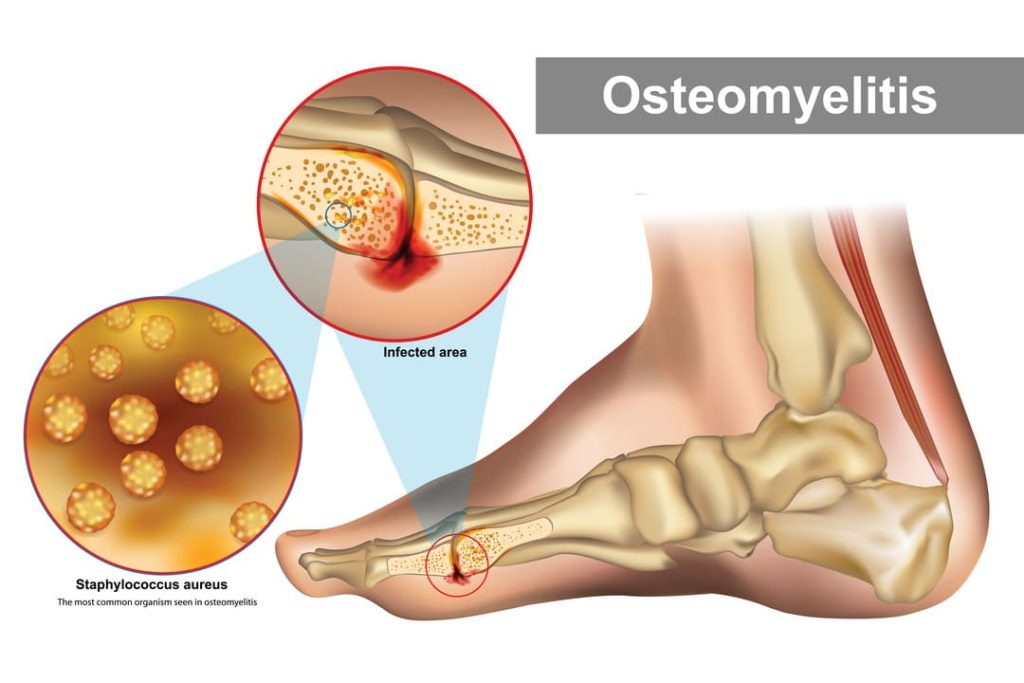Looking for Expert-Level VA Claim Answers?📱Call Us Now! 737-295-2226
If your military service left you with chronic ankle pain, stiffness, or limited mobility, you may qualify for VA disability benefits for ankle conditions.
Ankle injuries are among the most common service-related musculoskeletal disabilities, often caused by running, ruck marches, airborne operations, and daily wear and tear from military life.
This guide explains how to get an ankle VA disability rating, how the VA rates ankle conditions from mild limitation to full joint replacement, and what evidence you need to support your claim.
Summary of Key Points
- Veterans can receive VA disability ratings for ankle pain, instability, arthritis, or limited motion caused or worsened by military service.
- The VA rates ankle conditions under diagnostic codes 5270–5274, depending on whether the issue involves limited motion, joint deformity, or bone removal.
- Ratings range from 0% to 100%, with the highest percentages reserved for conditions like ankle replacements, severe bone infections (osteomyelitis), or malignant neoplasms.
- Medical evidence and service connection are crucial. A nexus letter, X-rays, or documentation of in-service injuries can significantly strengthen your claim.
Table of Contents
How the VA Rates Ankle Disabilities

When it comes to the VA, having ankle problems doesn’t qualify you for an ankle VA disability rating unless you can show it was caused or made worse by your military service. This is known as service connection.
Every disability, whether in your ankle or another part of your body, needs to be service-connected for you to be awarded VA compensation and benefits. Service connection is proven according to the Caluza Triangle.
Understanding Service Connection (The Caluza Triangle)
To qualify for any VA disability rating, including one for ankle problems, your condition must be service-connected.
That means showing three key things—known as the Caluza Triangle:
- A current diagnosis of a medical condition.
- Evidence of an in-service event, injury, or illness that caused or aggravated it.
- A nexus (link) connecting the two—usually established through a medical opinion or nexus letter.
Once these elements are proven, the VA rates your symptoms under the appropriate diagnostic code to determine your monthly compensation.
The Ankle VA Rating Schedule
What ankle VA rating you get depends entirely on the severity of your symptoms. Most people think the VA rates disabilities, but what they actually rate are the symptoms produced by your disability.
The worse your symptoms, the higher your rating, and vice versa.
They use the Veteran Affairs Schedule for Rating Disabilities (VASRD) when deciding what rating your symptoms warrant. The VASRD has a table for every disability covered by the VA that shows what rating corresponds to what symptoms. We call these “rating charts.”
In the rest of this post, we lay out all the possible ankle VA disability ratings and their associated rating chart.
Limitation of Motion
The VA doesn’t rate disabilities but the symptoms produced by a disability.
This is why the VA sometimes evaluates different disabilities using the same rating chart. If two conditions produce the same symptoms, the VA creates one rating chart, not two.
Limitation of motion in the ankle is one example. Several disabilities can degrade your ankle’s range of motion, and they’re all evaluated under either DC 5270 or DC 5271:
| 5270 Ankle, ankylosis of | Rating % |
| In plantar flexion at more than 40°, or in dorsiflexion at more than 10° or with abduction, adduction, inversion or eversion deformity | 40 |
| In plantar flexion, between 30° and 40°, or in dorsiflexion, between 0° and 10° | 30 |
| In plantar flexion, less than 30° | 20 |
NOTE: Ankylosis is another word for limitation of motion that refers to the stiffness of a joint due to abnormal adhesion and rigidity of the bones.
| 5271 Ankle, limited motion of | Rating % |
| Marked (less than 5 degrees dorsiflexion or less than 10 degrees plantar flexion) | 20 |
| Moderate (less than 15 degrees dorsiflexion or less than 30 degrees plantar flexion) | 10 |
Below are FOUR conditions the VA evaluates using the rating charts for DC 5270 and DC 5271:
Bone Weakness Conditions (Osteoporosis & Osteomalacia)
Both osteoporosis and osteomalacia cause weakened bones that may lead to ankle pain, stiffness, or fractures. These conditions are rated under DCs 5013–5014, but the VA evaluates them based on limitation of motion (DC 5270 or 5271). Your rating depends on how much your ankle’s range of motion is reduced—moderate cases at 10%, marked limitation at 20%, and severe ankylosis up to 40%.
VA Ratings for Gout in the Ankle
Gout is a form of arthritis that causes sudden pain, redness, and swelling in the joints—often in the ankle or big toe. The VA rates gout under Diagnostic Code 5017, but evaluates it using the same limitation-of-motion criteria under DC 5270 or 5271.
Mild or moderate gout attacks that limit motion may be rated 10–20%, while frequent, severe flare-ups involving multiple joints could warrant a higher evaluation under DC 5002 for multi-joint arthritis.
VA Disability Rating for Ankle Tendonitis
Tendonitis is inflammation of the tendons that connect muscle to bone. It is usually caused by an injury or by repeated use over time.
The diagnostic code for tendonitis is DC 5024. But like the previous three conditions, tendonitis is rated using the rating chart for DC 5270 or 5271.
Replacement (Prosthetic)
If your ankle joint is replaced with a prosthetic, you’ll be rated under DC 5056:
| 5056 Ankle replacement (prosthesis) | Rating % |
| Prosthetic replacement of ankle joint: | |
| For 1 year following implantation of prosthesis | 100 |
| With chronic residuals consisting of severe painful motion or weakness | 40 |
| With intermediate degrees of residual weakness, pain or limitation of motion rate by analogy to 5270 or 5271. | |
| Minimum rating | 20 |
As you can see, it’s possible your ankle replacement could also be rated under limitation of motion. It just depends on your specific symptoms.

Tarsal Joint Limitation of Motion
The Tarsal Joint is made up of 3 different bones in the ankle:
- The Navicular
- The Calcaneus (heel bone)
- And the Talus
Limitation of motion of the Tarsal joint is rated under DC 5272:
| 5272 Subastragalar or tarsal joint, ankylosis of | Rating % |
| In poor weight-bearing position | 20 |
| In good weight-bearing position | 10 |
Heel and Talus Bone Malunion
The term used for this disability in the VASRD is “malunion of os calcis or astragalus.”
In English, this refers to when the heel bone and talus bone don’t join correctly, or when a fracture doesn’t heal right.
One possible symptom of this disability is an ankle deformity, which is rated under DC 5273:
| 5273 Os calcis or astragalus, malunion of | Rating % |
| Marked deformity | 20 |
| Moderate deformity | 10 |
Astragalectomy: Removal of the Talus Bone
Removal of the Talus bone is called an astragalectomy. This is a specific type of surgery that’s rated under DC 5274:
| 5274 Astragalectomy | Rating % |
| Surgical removal of Talus bone | 20 |

Osteomyelitis VA Ratings
Osteomyelitis is an infection in the bone that can cause swelling, warmth, redness, and pain. Because the ankle is a major joint, this condition is rated under DC 5000, with ratings from 10% for inactive infection to 100% for severe, chronic infections involving major joints or multiple sites.
Because the VA considers the ankle to be a major joint, osteomyelitis of the ankle can be rated under Diagnostic Code (DC) 5000:
| 5000 Osteomyelitis, acute, subacute, or chronic: | Rating % |
| Of the pelvis, vertebrae, or extending into major joints, or with multiple localization or with long history of intractability and debility, anemia, amyloid liver changes, or other continuous constitutional symptoms | 100 |
| Frequent episodes, with constitutional symptoms | 60 |
| With definite involucrum or sequestrum, with or without discharging sinus | 30 |
| With discharging sinus or other evidence of active infection within the past 5 years | 20 |
| Inactive, following repeated episodes, without evidence of active infection in past 5 years | 10 |
| Note (1): A rating of 10 percent, as an exception to the amputation rule, is to be assigned in any case of active osteomyelitis where the amputation rating for the affected part is no percent. This 10 percent rating and the other partial ratings of 30 percent or less are to be combined with ratings for ankylosis, limited motion, nonunion or malunion, shortening, etc., subject, of course, to the amputation rule. The 60 percent rating, as it is based on constitutional symptoms, is not subject to the amputation rule. A rating for osteomyelitis will not be applied following cure by removal or radical resection of the affected bone. | |
| Note (2): The 20 percent rating on the basis of activity within the past 5 years is not assignable following the initial infection of active osteomyelitis with no subsequent reactivation. The prerequisite for this historical rating is an established recurrent osteomyelitis. To qualify for the 10 percent rating, 2 or more episodes following the initial infection are required. This 20 percent rating or the 10 percent rating, when applicable, will be assigned once only to cover disability at all sites of previously active infection with a future ending date in the case of the 20 percent rating. | |
If you have these symptoms in either of your ankles and think your military service is responsible, you should consider filing a VA claim.
Arthritis of the Ankle
Arthritis is one of the most common ankle conditions veterans experience, often caused by repetitive stress or injuries during service. The VA rates arthritis under DC 5002–5003, based on X-ray evidence and range of motion. Mild arthritis typically receives 10–20%, while severe, multi-joint arthritis with systemic symptoms can reach 40–60%.
Malignant Neoplasm in the Ankle
Though uncommon, cancerous bone growths around the ankle are rated under DC 5012. The VA grants a temporary 100% rating during active treatment or for one year after surgery, chemotherapy, or radiation. After that, your rating depends on residual symptoms or complications.
After that period, you could lose the 100% rating. If your neoplasm has returned, you’ll keep 100%. If it hasn’t returned, you’ll be reevaluated and given a rating based on the symptoms caused by the treatment you received for the neoplasm (for example, the fallout of chemotherapy).
Ankle Instability
Chronic ankle instability occurs when repeated sprains or ligament injuries leave the ankle weak or prone to giving out. Symptoms include pain, swelling, and loss of balance.
Veterans with documented ankle instability from service can qualify for VA benefits under DC 5271, based on limited motion or residual weakness (usually 10–20%).
VA Rating for Ankle Pain
TL;DR — the VA doesn’t award disability compensation for pain alone; you need an underlying diagnosis such as arthritis, instability, or limited motion. The highest possible ankle pain VA rating is 100%, depending on the condition causing your pain. Conditions such as osteomyelitis, active tuberculosis, multi-joint arthritis, malignant neoplasm, or ankle joint replacement can all qualify for a 100% VA disability rating.
How to Apply for VA Benefits
You can read our blog, How to File a VA Claim Online (17-Step Tutorial), for comprehensive instructions for filing a claim, but here are the basics:
- Submit an intent to file. This helps make sure you have the earliest effective date possible.
- Gather your evidence and relevant records, such as your DD-214, current diagnosis, in-service records, medical records, and Nexus Letter or Independent Medical Opinion.
- Submit your claim online, in person at a VA regional office, or by mail at
Department of Veterans Affairs
Claims Intake Center
PO Box 4444
Janesville, WI 53547-4444
- Await a decision. Expect the VA to schedule a few doctor appointments for you.
- Appeal if necessary (if you were denied or think you deserve a rating increase)
Conclusion
Ankle injuries are some of the most overlooked but disabling conditions veterans face. Whether caused by training, long marches, or years of physical strain, these injuries can severely affect your mobility and quality of life.
If you’re dealing with chronic ankle pain or instability tied to your service, you may be eligible for monthly, tax-free VA disability compensation.
The key is documenting your diagnosis, proving your in-service injury or aggravation, and providing a strong medical nexus that connects your condition to military service.
NEED MORE ASSISTANCE?
Most veterans are underrated for their disabilities and, therefore, not getting their due compensation.
At VA Claims Insider, we guide you into control of the claims process so you can get the rating and compensation you’re owed by law. If you’ve filed your VA disability claim and have been denied or have received a low rating—or you’re unsure how to get started—reach out to us!
Our process takes the guesswork out of filing a VA disability claim and supports you in building a fully developed claim (FDC)! Take advantage of a VA Claim Discovery Call.
Learn what you’ve been missing—so you can FINALLY get the disability rating and compensation YOU DESERVE!
FAQs
How does the VA rate ankle disabilities?
The VA uses diagnostic codes 5270–5274 to rate ankle disabilities based on symptoms such as limited motion, instability, ankylosis (joint stiffness), or deformity. Ratings typically range from 10% to 40%, though certain conditions (like replacement or bone infection) may qualify for higher ratings up to 100%.
Can I get a VA disability rating for ankle instability?
Yes. Ankle instability is a common service-connected condition that can result from repeated sprains or ligament damage. It’s rated based on the degree of limited motion or weakness in the ankle.
What is the average VA rating for ankle pain?
Most veterans receive between 10% and 20% for ankle pain, depending on range of motion loss and the severity of symptoms. More serious cases involving arthritis or chronic instability may qualify for 30% or higher.
What is the highest VA disability rating for ankle conditions?
The maximum possible ankle VA rating is 100%, awarded for conditions such as active bone infections (osteomyelitis), malignant tumors, or immediately following total ankle replacement surgery.
Can ankle arthritis or tendonitis qualify for VA benefits?
Yes. Both arthritis and tendonitis are eligible if they were caused or aggravated by your military service. They’re rated under limitation-of-motion diagnostic codes (5270–5271).
Do rare conditions like bone tuberculosis or ankle cancer qualify for VA disability?
Yes, but these are uncommon. If diagnosed, the VA rates them under DC 5001 (tuberculosis) or DC 5012 (malignant neoplasms), often granting a temporary 100% rating during active treatment.
Author

Clay Huston
Clay Huston is a former U.S. Army Reserves Blackhawk Pilot and officer. Clay enlisted in the Army in 2013 and was commissioned as a 2LT in 2017 after earning a business degree from the University of Illinois Champaign-Urbana.
Since separating from the military, Clay has pursued a career as a writer. He also runs the nonprofit notfatherless.org, which fundraises for Children’s Homes in Mexico.



